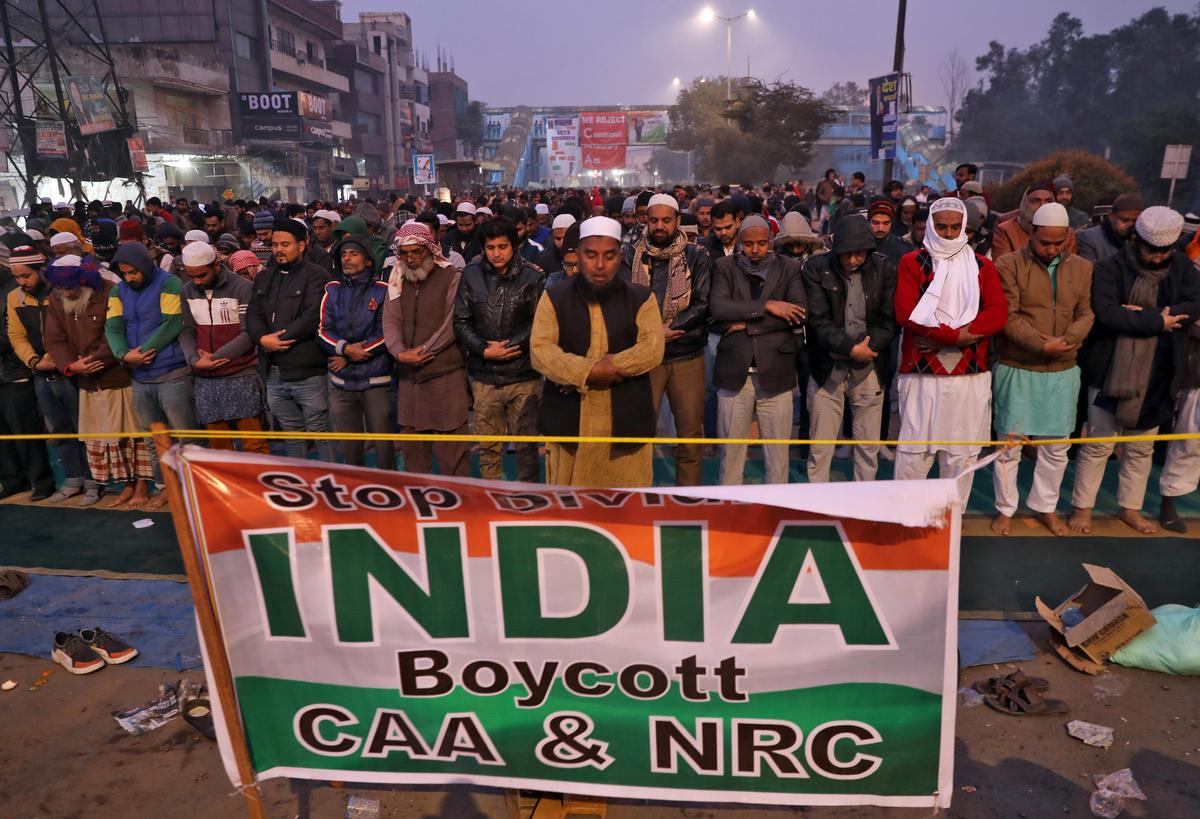Protesters offer hope after India loses its way
https://arab.news/cpypc

In India, the new decade has begun much as the last one ended: With violence, rancor and vendetta. All around the country, millions of citizens have taken to the streets to protest, in the first instance against the government’s controversial Citizenship Amendment Act (CAA), and, thereafter, against the government’s crude attempts to marshal the might of the state to crack down against the protests themselves.
The mass demonstrations have roused the nation and created the most effective, if piecemeal and decentralized, opposition to the ruling Bharatiya Janata Party since Narendra Modi won his first majority in Parliament in the summer of 2014. But the attempt by vigilant citizens to restrain, by an appeal to constitutional values, the divisive agenda of a Hindu nationalist government has so far only yielded a sense that, in this fight, there is to be no dialogue or common ground between the two sides; only a struggle over two mutually exclusive ideas of India.
Without a doubt, this is a crisis that has been precipitated by the government. The CAA is putatively an attempt to make it easier for persecuted minorities — among them Hindus, Buddhists, Christians and Sikhs — in the countries neighboring India to become Indian citizens and live under the sheltering sky of a secular nation. But the stark omission of Muslims from the ambit of the new law points to many dark and divisive impulses buried in its conception. It also points to a sinister agenda on the part of the ruling party to isolate scores of Indian Muslims when it begins its proposed attempt to prepare a National Register of Citizens (NRC) sometime later this year.
Both Modi and Home Minister Amit Shah have been at pains to deny any link between the CAA and the NRC, and to dismiss objections to the new bill as the scaremongering and paranoia of the political opposition. Sadly, the easy availability on the internet of multiple videos of Shah addressing political rallies in which he explicitly links the two citizenship-related moves of the government suggests two things. One, the government did not anticipate the rise of a mass movement in the country against the CAA, and so now it cannot lose face by backing down. And, two, the ruling party is happy to lie brazenly when backed into a corner in the hope that its large support base on the ground and on social media will run with its fabrications until the opposition is drowned out. This does not bode well for the four years it has left of its term.
The news from other sectors of Indian life is just as disturbing. At the start of the 2010s, India was one of the fastest-growing economies in the world. Annual gross domestic product (GDP) growth stood in excess of 7 percent for several years running. Investors the world over sought a foothold in Indian markets.
In contrast, the decade ended with GDP growth down at 4.5 percent for the quarter between July and September 2019 — the sixth successive quarter of declining growth, adding up to an economic slowdown not seen for 23 years. Indeed, the main highlights of Indian economic life in the past decade were not sparks but shocks: A series of scams relating to the allocation of public goods that destroyed the credibility of the coalition government led by Manmohan Singh in the first part of the decade; Modi’s sudden demonetization of the Indian economy in 2016; the introduction of a complicated new Goods and Services Tax in 2017; and a deepening of the agrarian crisis that has debilitated millions of Indian farmers.
It was not only the realities that degraded over the decade; so did the promises. Modi came to power in 2014 promising millions of jobs for India’s burgeoning youth population. He returned to power in 2019 sidestepping the perilous state of the economy, focusing instead on drumming up nationalist passion over his government’s strikes on terrorist camps in Pakistan. The decade ended with unemployment at a three-year high.
It is hard to escape the conclusion that the years 2010 to 2019 represent a kind of lost decade for India.
Chandrahas Choudhury
It is hard to escape the conclusion, then, that the years 2010 to 2019 represent a kind of lost decade for India. They should have been years in which the country left behind the divisions that rocked and eventually split the subcontinent in the 20th century and, secure in its own identity, presented a mature and confident face to the world. They should have been a decade in which a new generation of politicians born in the post-independence years rose to prominence with a plan to extend the liberal project of the founding fathers — not to sabotage them and set the country off in an entirely new direction. They should have been years in which social unrest centered on issues of material life (for instance a theory of development that did not privilege urban over rural) and structural injustice related to caste and gender, and not about an attempt to polarize society on the grounds of religion and political ideology.
To all but the zealots and spin doctors of the ruling party, then — and certainly in the chamber of global opinion — India in January 2020 looks like a country that has lost its way. Only the hundreds of thousands on the streets, of diverse languages and creeds, united by banners on which the word “Constitution” is prominent, give cause for hope that this decade may not end the way it began.
- Chandrahas Choudhury is a writer based in New Delhi. His work also appears in Bloomberg View and Foreign Policy. Twitter: @Hashestweets









































